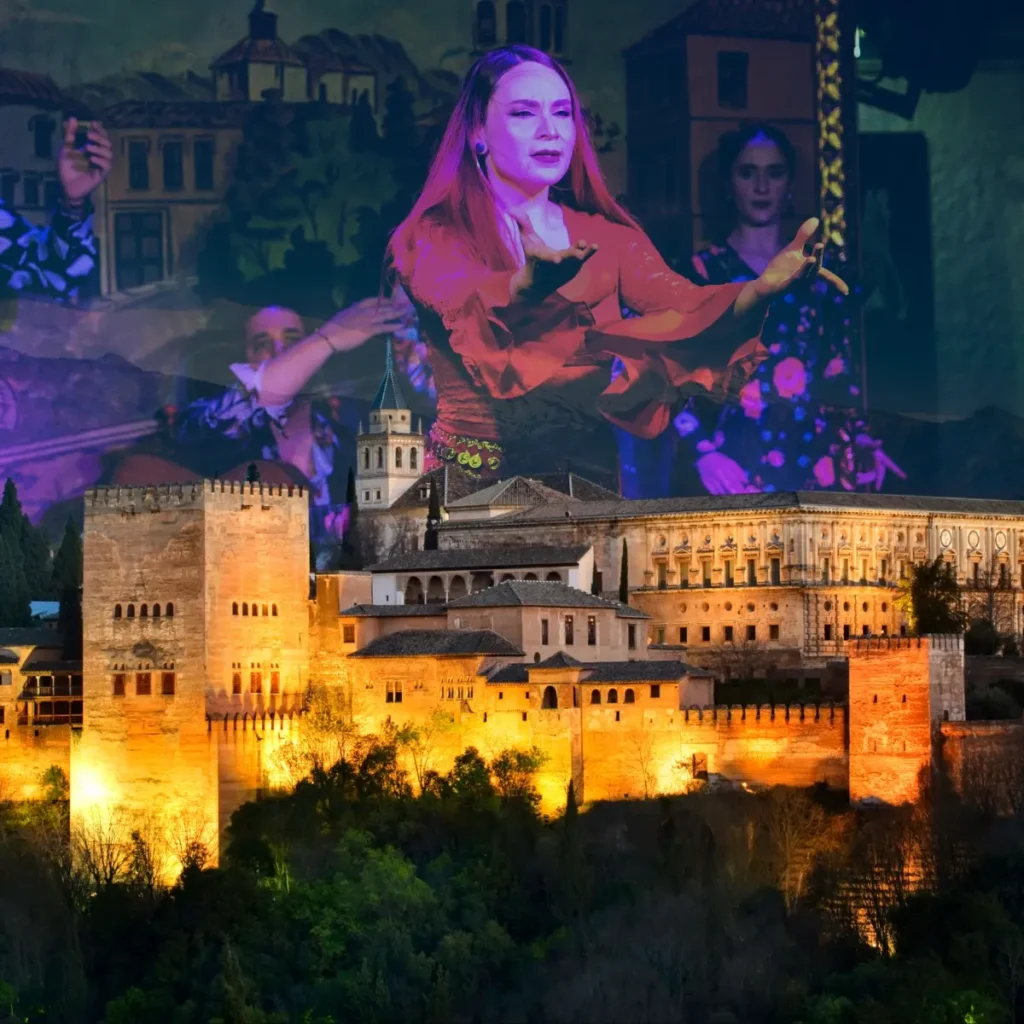You can say you’ve visited Granada, but until you hear a “quejío” in front of the Alhambra, you can’t say you’ve tasted its soul. Without that, you’ve only looked at Granada, not lived it.
Without a doubt, we cannot speak of Granada without mentioning two of its souls, which are flamenco and the Alhambra. They are cultural icons not only of the city but of all of Andalusia.
At first glance, we could say they are independent, that they have nothing to do with each other. One is a 13th-century fortress of the Nasrid dynasty, and the other is an artistic expression born from Andalusian cultural mixing, but both are part of Granada’s history.
The Alhambra: Beauty Made of Stone
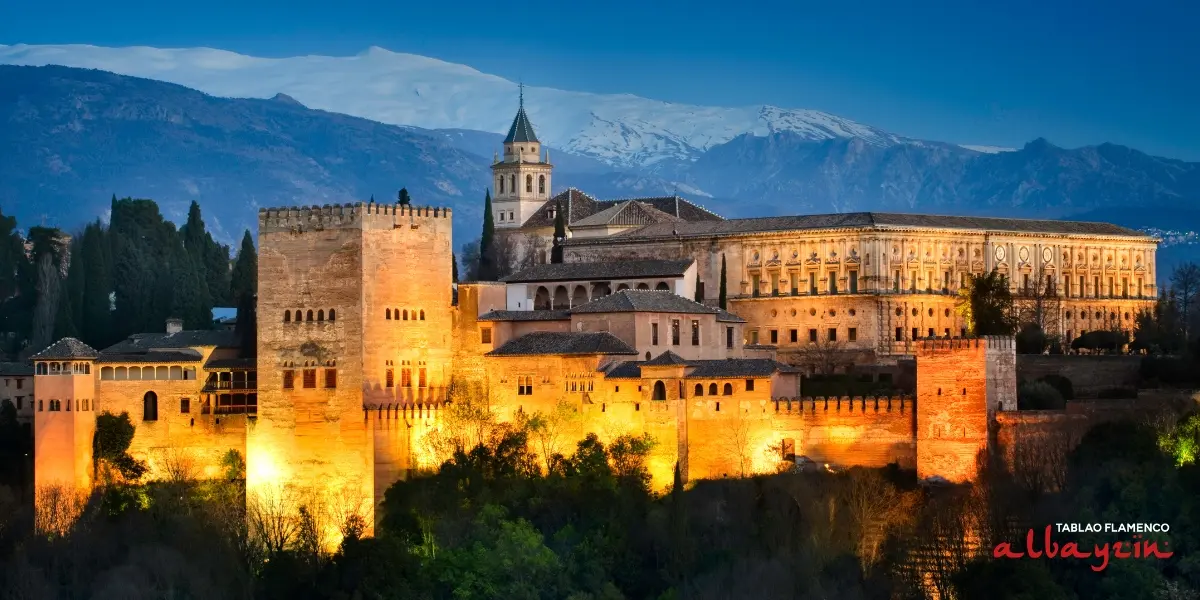
To speak of the Alhambra is to speak of something more than a monument; it is said to be poetry transformed into stone, light, and water.
Its name comes from an Arabic word and means “The Red”. It is situated on the Sabika hill, or the red hill of Granada. Its construction began in the 13th century during the reign of the founder of the Nasrid dynasty, Muhammad I.
It was built to be an alcazaba (fortress), an alcázar (palace), and a small medina (city), all at once. The palaces are decorated with intricate mosaics, various tiles, and plasterwork. Its gardens (Generalife) are designed to be a haven of peace and harmony, filled with fountains and vegetation.
The Alhambra is a symbol of beauty, spirituality, and power.
Flamenco: the Passion of Granada
Likewise, flamenco is one of the purest manifestations of the Andalusian soul. It emerged from the cultural mix of Jews, Castilians, Moriscos, and Gypsies. Flamenco was born around the 18th century with the Gypsy settlement in areas of Andalusia.
It is said to have originated from the zambras, which were Morisco wedding dances that the Gypsies gradually adapted, adding their personal touch until creating their own folklore. Dance and song blend in a language that cannot be defined, only felt, the language of the duende.
The word duende was popularized by the great Federico García Lorca, a poet from Granada, and refers to a somewhat mystical force that dominates the artist while performing, giving them that touch of passion and emotion in their performance.
Flamenco and Alhambra – Morisco Legacy
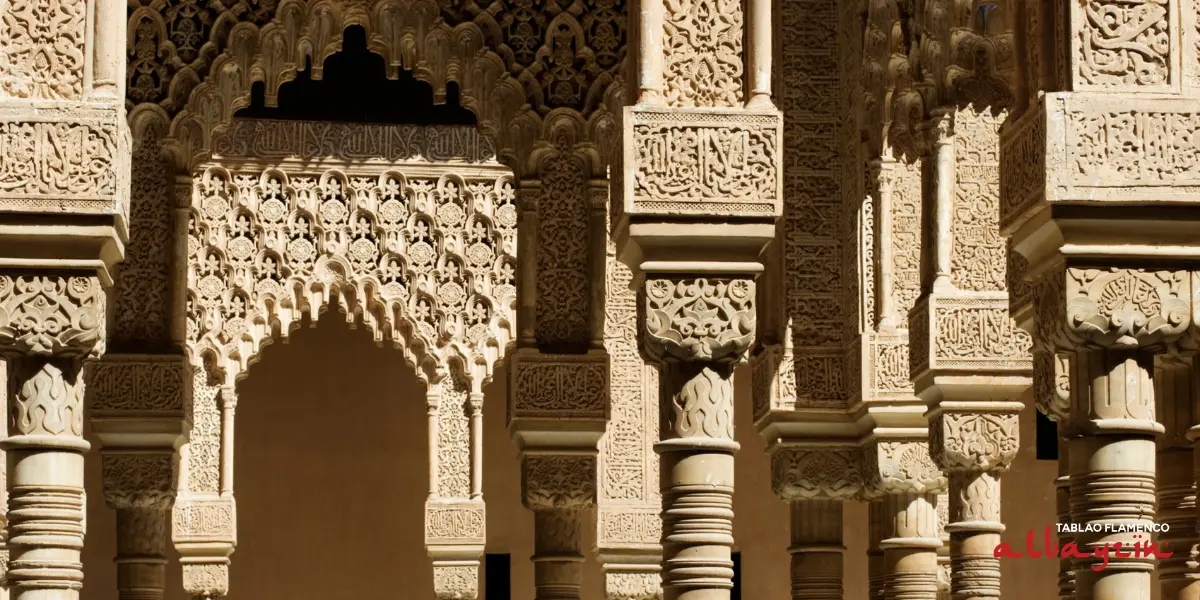
Exactly, we could say that both the Alhambra and flamenco have a Moorish root, and that in some way they have a connection.
In 1492, the Nasrid kingdom fell to the conquest of the Catholic Monarchs, and the Muslims who remained in the peninsula, forced to convert to Christianity, were called Moriscos. Despite their conversion to Catholicism, they kept part of their culture alive, their music, dance and poetry. Little by little, the gypsies added part of that culture to the DNA of what we now know as flamenco.
There is no doubt that many of the “vocal ornaments” called melismas, characteristic of cante jondo, the Andalusian scales and musical modes such as the Phrygian or Dorian have an Arabic inspiration.
In Andalusian music, resources that are used in flamenco today were already used, such as the way of embellishing the voice, the use of microtonalism, and spontaneity and improvisation.
Granada: a Great Icon of Flamenco
Granada, in addition to having its great icon, the Alhambra, is also a city that carries flamenco as its banner.
For centuries, this art has been deeply breathed in two of its most famous neighborhoods, Albaicín and Sacromonte. Their gypsy zambras, full of song, dance and music, are part of the soul of this city, of its enchantment.
The zambras come from the wedding rituals of the Moriscos and, little by little, the gypsies adapted them to their culture, integrating them to create their flamenco. Today, after so much time, they continue to be typical flamenco shows of Sacromonte and highly acclaimed by tourists internationally.
If you have walked through the streets of Granada, you will know that it is a city that has something special, and that in it, art is not only seen or heard. It is lived, it is felt.
Flamenco Sounds Inside the Alhambra
Currently, the Alhambra is a protected space for conservation reasons, and shows and events are not usually allowed very often. On some occasions, flamenco performances have been held inside.
One of the most significant performances in recent years was the performance of Paco de Lucía, who played his guitar in the Palace of Charles V in a concert that is still remembered today.
The purest fusions of Spanish cultural history. Every summer, the Alhambra International Music and Dance Festival has also been held, where artists of the caliber of Eva Yerbabuena, Sara Baras or Vicente Amigo have performed shows within its walls.
The Alhambra: Source of Inspiration for Lorca
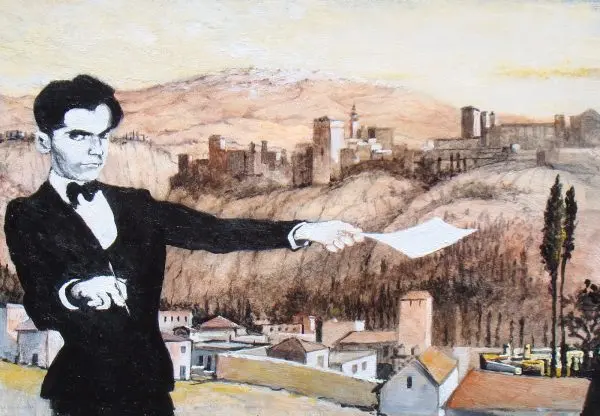
One of the poets in recent years who has been most inspired by both the Alhambra and flamenco has been Federico García Lorca. He was born in a town in the province of Granada, Fuente Vaqueros, and has always kept these two jewels of Granada culture very present in his verses.
In his lecture Play and Theory of the Duende, Federico said:
“The duende does not come if it does not see the possibility of death… It must awaken in the last rooms of the blood.”
And the Alhambra is a prime example of death and resurgence. It is a fortress that has remained standing after various wars, conquests, and restorations. In it, the light changes every hour, just as a flamenco song changes in each interpretation.
Enduring Arts – World Heritage Sites
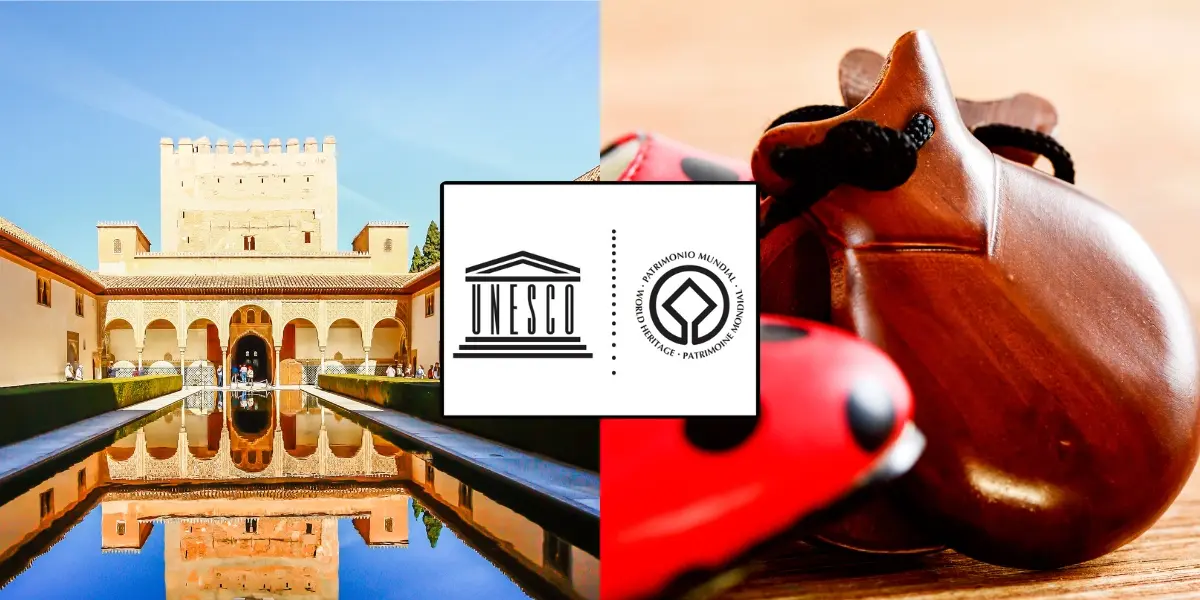
UNESCO recognized the Alhambra and flamenco as World Heritage Sites.
The Alhambra obtained this recognition in 1984 as part of the “Alhambra, Generalife and Albaicín” ensemble, and later, in 2010, flamenco obtained it as intangible heritage.
This recognition is given to places or cultural expressions when they are considered unique and irreplaceable and therefore are protected and preserved so that they can endure for several generations.
The historical and cultural value of both the Alhambra and flamenco has been so significant that they have transcended many years and represent a treasure that we all must preserve and admire.
The Present: Fusion of Arts
Currently, there are still many artists who seek inspiration in the Alhambra for their artistic projects. Many shows fuse part of that Nasrid visual art, such as its mosaics, fountains, statues, or gardens to give that Arabic touch to cante jondo.
It is also common for tourism companies to offer visitors a sensory journey through the city, by means of routes that blend the two worlds: guided tours of the Alhambra that end with a flamenco show.
In Granada, flamenco and the Alhambra blend to provide an experience that reaches the heart of those who live it.
Because as long as a flamenco guitar plays in Granada and there is a gaze upon the arches of the “red castle”, that enchantment will remain alive, uniting the visible with the invisible, the earthly with the spiritual, the ancient with the contemporary.

